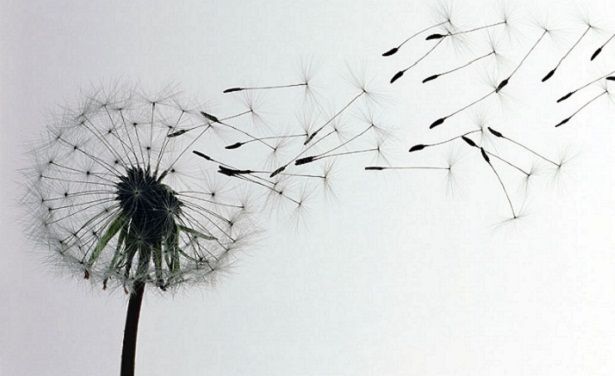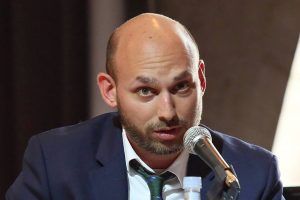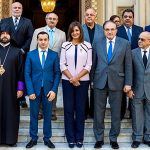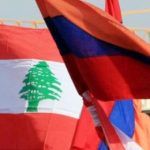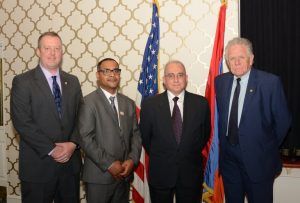The creative force of an Armenian

Armenians are creative everywhere and in almost all spheres of life. They are creators of numerous famous innovations in the international arena, and one of those creators is Doctor of Technical Sciences, Professor Eduard Manukyan, who gave an interview for Hayern Aysor electronic newspaper.
Karine Avagyan: Mr. Manukyan, when and why did you come up with the idea of creating a multilingual electronic dictionary? Was it your desire, or was it an order?
Eduard Manukyan: It was at my own initiative since the absence of the Armenian language on the Internet would lead to the loss of the language. I started working on the project in September 2000 when my team and I were trying to conduct a mechanical analysis of the Armenian language. We were trying to produce a mathematical model of a sentence in Armenian, and only after that were we able to convert the sentence to other languages, like English. It turned out that we needed to have basic knowledge that would show the piece of the material world that was mentioned in the sentence to be translated. In 2004, we felt that we could also use our knowledge to create electronic dictionaries.
Karine Avagyan: Can we consider it a scientific innovation?
Eduard Manukyan: Until 2011, it was considered a scientific innovation, and Armenia was one of the few countries that had or were trying to have electronic translators. After 2011, large firms invested vast amounts of money and obtained quite successful electronic translators for translations into their respective languages. However, in the scientific sense, we are competitive with other firms. Large firms have been working in our selected direction (to receive a semantic translation) and have been investing tens of millions of dollars for the past 10-15 years, and I feel that they will soon surpass us.
Karine Avagyan: What would you say about the force and popularity? Is the dictionary accessible to the public at large and various age groups of people who want and need to use a multilingual dictionary for study or work?
Eduard Manukyan: The key component of our system is the multilingual dictionary. We placed this emphasis because language is preserved through dictionaries, and it has to be available for all layers of society. The feedback shows that our dictionary is mainly used by schoolchildren and university students.
Karine Avagyan: What were your format and principles for the selection of languages for the latest dictionary? There is a combination of languages and dialects, say English, Russian and even the dialect of the Armenians of Hamshen…
Eduard Manukyan: The selection of the languages was based on the following arguments:
- to maintain the opportunities for communication with Armenians around the world, we included Eastern Armenian and Western Armenian, Russian, which is a common language in the Armenian Diaspora, as well as English, German and French.
- to help incognito Armenians in Turkey, we also included Turkish, Zaza language, the dialect of Hamshen and Kurdish since many Armenians are hidden under the veil of those nations.
- we include the languages of Lezgi and Talish since the bearers of those languages are a national minority in Azerbaijan and are culturally under pressure. By providing them with assistance in terms of culture, we hope to gain potential friends, namely national minorities in the heart of Azerbaijan.
- we included Latin since it is the professional language for doctors and biologists.
- the list of languages also includes grabar (classic Armenian), and the dictionaries of grabar-European languages will help make our centuries-old cultural assets accessible for foreign specialists (historians, linguists, etc.)
Karine Avagyan: Are the users of those online dictionaries content? Do they have any complaints about accessibility or the limited number of words?
Eduard Manukyan: There are complaints since we don’t have a lot of technologies. We don’t think our interface is a good one. We need funding to give solutions. As far as the vocabulary is concerned, our dictionary is one of the richest in terms of translations from Armenian into English. The Armenian-Russian dictionary doesn’t feature many words, but we will solve that problem over the next two months. In terms of the number of words, the picture is the following:
number of concepts presented in the dictionary: 91,000
there are around 120,000 words for Eastern Armenian, Western Armenian and Russian each
Turkish: 45,000 words
French, German: around 20,000 for each
grabar (classic Armenian), Latin: around 15,000 for each
Dialect of Hamshen-Armenians: around 5,500 words
Language of Zazak: around 800-900 words.
We should take into consideration the fact that a particular word can be translated from any of the above-mentioned languages into any of the specified languages. You can mark several languages at once in the “Translate” section.
Karine Avagyan: If you take a look back at the past and the hardships you have faced, will you ever regret the time that you spent?
Eduard Manukyan: No!
Karine Avagyan: You have also developed artificial intelligence systems. Could you please present those systems? How effective are they and what are the spheres for their use?
Eduard Manukyan: We have used the results achieved through the creation of artificial intelligence systems to preserve the semantic translations. We are currently trying to use them in the “cloud” robot technologies field, laying the foundation for the establishment of the approach through which we can communicate with robots in Armenian as well. Few nations will be able to do this in the future.
Karine Avagyan: Well, Mr. Manukyan, let’s hope, better yet, let’s be rest assured that the Armenians will be among the first of those few nations. I wish you success in your unique and interesting endeavors, as a result of which we will see new inventions introduced by and through Armenians, and in this case-you.
Interview by Karine Avagyan




 Արևելահայերեն
Արևելահայերեն Արևմտահայերեն
Արևմտահայերեն Русский
Русский